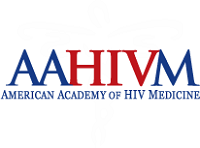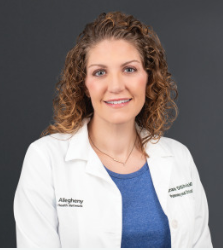Article
Free CME Course: Treating Older People with HIV
Author(s):
HIV and Aging Consensus Project recognizes World AIDS Day by releasing free Online CME/CE. The course focuses on optimal treatment for older people living with HIV.

The HIV and Aging Consensus Project , based in Washington, DC, is proud to announce the availability of free online CME/CE based upon the learnings from the report Recommended Treatment Strategies for Clinicians Managing Older Patients with HIV. Originally released in 2011 and updated in 2016, the report has emerged as the premier resource for managing HIV in older adults. Housed on HIV-Age.org, the go-to online site for clinicians seeking best practices for managing the care of older people living with HIV, each chapter of the report provides CME/CE credit for a maximum total of 12.25 AMA PRA Category 1 Credits™, as well as ACPE credit. The CME/CE activity will be available until November 30, 2017.
“There is no better time than World AIDS Day to raise awareness of the population of older people living with HIV by bringing more education and resources to those dedicated professionals who are on the frontlines of care,” stated Jonathan Appelbaum, MD, FACP, AAHIVS, of Florida State University and Medical Co-Director of HIV-Age.org. “As our initiative reminds us — those who provide clinical care to HIV-infected older adults are spending more time addressing and managing comorbidities associated with aging and not HIV. Multimorbidity management is best achieved by embracing geriatrics principles.”
Addressing the needs of older adults is essential to the HIV epidemic in the U.S. In major metro areas more than half of all those living with HIV are age 50 and older. For example, in San Francisco, more than 60% of people living with HIV are over 50 and in New York City, the estimate is 55%.
The HIV and Aging Consensus Project was developed by the American Academy of HIV Medicine (AAHIVM), ACRIA and the American Geriatrics Society (AGS) to assess how the presence of both HIV and common age-associated diseases alters the optimal treatment of HIV, as well as other co-existing medical conditions. As part of this project, in 2011, project members released Recommended Treatment Strategies for Clinicians Managing Older Patients with HIV. The report, developed by a panel of experts with experience in the fields of HIV and Geriatrics, continues to provide guidance for HIV clinicians and other health care providers who treat, diagnose and refer older patients with HIV disease.
The following chapters now offer online CME/CE credits:
Chapter 3 — Assessing Frailty and Functional Capacity
Chapter 5 — Multi Morbidity
Chapter 7 — Detection and Screening for HIV in Older Adults
Chapter 8 — When to Initiate Antiretroviral Therapy in HIV and Aging
Chapter 9 — Immunizations in HIV and Aging
Chapter 10 — Smoking Cessation in HIV and Aging
Chapter 11 — Cardiovascular Disease Screening and Prevention in HIV
Chapter 12 — Diabetes Mellitus in HIV and Aging
Chapter 13 — Drug-drug Interactions and Polypharmacy in HIV and Aging
Chapter 14 — Cancer in HIV and Aging
Chapter 15 — Viral Hepatitis Screening in HIV and Aging
Chapter 16 — Chronic Obstructive Pulmonary Disease in HIV and Aging
Chapter 17 — Sexual Health in HIV and Aging
Chapter 18 — Osteoporosis in HIV and Aging
Chapter 19 — The Kidney in HIV and Aging
Chapter 20 — Hypertension in HIV and Aging
Chapter 21 — Older Age and HIV-Associated Neurocognitive Disorder (HAND)
Chapter 22 — Depression in HIV and Aging
Chapter 23 — Anxiety Disorders in HIV and Aging
Chapter 24 — Substance Abuse Disorders
Chapter 25 — HIV-1 Associated Peripheral Neuropathologies in HIV and Aging
Chapter 26 — Advance Care Planning in HIV and Aging
Chapter 28 — PrEP and the Older Adult with HIV
Chapter 29 — Nutrition in HIV and Aging
The CME/CE activity was jointly provided by Postgraduate Institute for Medicine (www.pimed.com) and AAHIVM; in collaboration with ACRIA and AGS.
To access the CME content, please click here or visit http://hiv-age.org/cmece-info/.
Also, please visit HIV-Age.org regularly for editorials by leading clinicians, researchers and thought-leaders in the field, scientific spotlight articles on the latest research and treatment options, thought-provoking case studies and useful medical and government resources and links.
####




